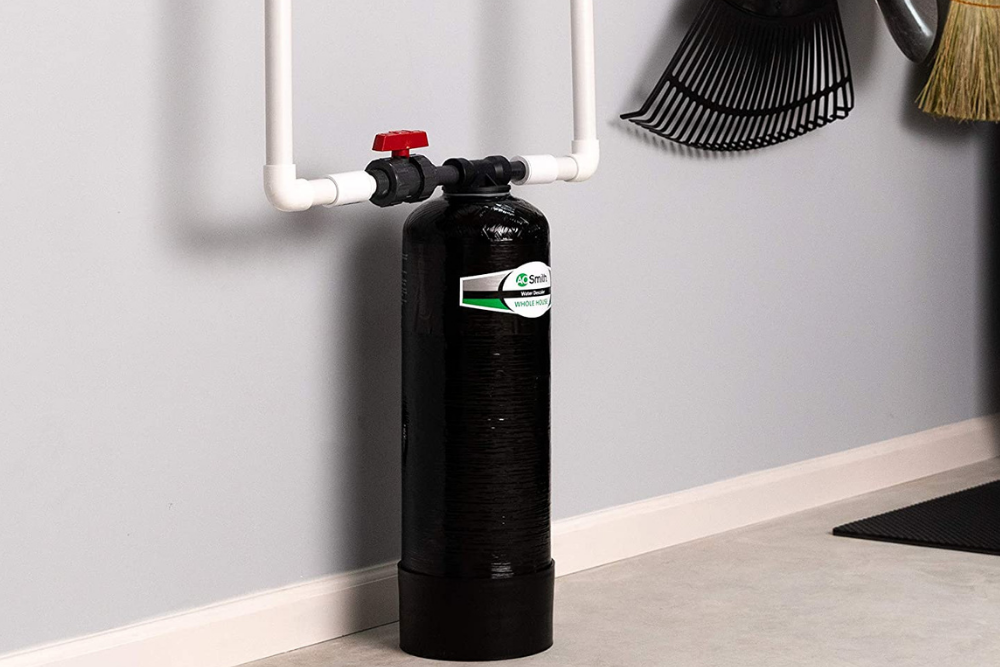Unfortunately, there are no salt-free water softeners available right now. There is no salt-free water softener. Without the sodium ions dislodging the calcium and magnesium ions that cause water hardness, the ion exchange mechanism employed by water softeners would not function. A salt-free water conditioner or scale inhibitor would be a more suitable term to describe products that are frequently sold as salt-free water softeners.
In contrast to salt-based systems, saltless water softeners assert to achieve the same outcomes with less bulk and effort. These salt-free systems guarantee that there won’t be any more room-consuming, expensive salt tanks, salt bags, or back-painting dragging salt sacks home to reload the system.
In reality, salt-free water softeners aren’t actually water softeners, they don’t offer many of the same advantages as salt-based systems, and they aren’t approved to satisfy industry requirements. Here is a comparison of the two and an explanation of why a salt-based system is a superior financial decision.
What is a salt free water condition?
A water filtering system that crystallizes the magnesium and calcium minerals present in hard water is known as a salt-free water conditioner. These nanocrystals are unable to float out of the solution and develop scale on water heaters and pipes. Hardness minerals are not physically removed by water conditioners; instead, they are changed and rendered incapable of accumulating as scale buildups. The removal of hardness minerals occurs through a process known as ion exchange in conventional water softeners. In an ion exchange procedure, salt solution is used to rinse plastic resin beads, which charges each bead with a sodium ion. The sodium ions exchange with the magnesium and calcium ions as the hard water passes through these beads. The water that leaves the tank and enters the home has now been softened, but as a result of the softening process, it does include small levels of salt.

Ion exchange, a process used by salt-based water softeners, converts “hard” water into “soft” water. Before starting a cleaning cycle, the system measures water by the gallon using the electronic metered valve located above the resin tank. The cleaning cycle starts when the resin bed achieves saturation. A number of backflushes are performed during the cycle to remove the trapped minerals from the system. Salts like sodium and potassium chloride exchange with minerals that cause hardness (mainly calcium and magnesium) as water runs through the resin bed within the tank, producing “soft” water. Throughout the cycle, the salts in the resin bed are also replenished, making the system ready to function once again.
Salt-based vs salt-free
Magnesium and calcium are drawn to and removed from the water supply by salt-based water softeners using a negatively charged resin bed. To clean the water softener and rejuvenate the resin bed, some water softeners also use salt. The hard water concentration is discharged down the drain when sodium ions with positive charges replace the hard water minerals that have been trapped in the resin bed during regeneration.
On the other hand, salt-free water softeners do not get rid of the minerals in hard water. Instead, they chemically alter the magnesium and calcium to prevent scale precipitation and surface adhesion. There is no need for salt or a regeneration cycle to flush the minerals down the drain since salt-free water softener systems do not truly collect the hard water minerals.
Salt-free water softeners are not genuinely softening water; rather, they are for “water conditioning” because the definition of water softening demands that hard water minerals be removed, while the salt-free method just ALTERS the minerals, enabling them to remain in the water.
Scale from accumulating in your plumbing is indeed prevented by salt-free water conditioners. However, a salt-free water conditioner or scale inhibitor won’t offer many of the benefits that a water softener does. The hardness minerals in the water are physically removed by water softeners and flushed down the toilet. Your house is protected from the minerals that might harm your appliances and water heaters. Hard water damage, however, goes beyond merely size.

Verdict: Should you invest in a salt-free water softener?
Salt-based softeners are made to take the minerals out of your water that cause hardness. As a consequence, you’ll likely see little to no limescale accumulation on your home’s fixtures and appliances. Additionally, you’ll notice that your clothing seems cleaner and brighter, and that your skin and hair no longer feel dry and scratchy. Having appliances that are more effective and last longer, as well as needing less repairs and plumbing upkeep, are additional long-term advantages. Nevertheless, despite all these wonderful advantages, salt-based softeners are typically more expensive than salt-free softeners and frequently need ongoing maintenance.
If the amount of hardness in your water is really high, salt-based softeners should be used to soften the water. It’s simple: only salt-based water softeners have been shown to provide softer water, better skin, and no soap scum or scale accumulation.






